"A HARD DAY'S NIGHT"
ORIGINAL MOTION PICTURE SOUND TRACK
(UAS 6366)
Released June 26th, 1964
A new and exciting way for Beatlemaniacs the world over to get to know their favorite new recording artists arrived in the form of a big screen, theatrical release called "A Hard Day's Night." In fact, this medium actually cemented the popularity of The Beatles in ways they may not have realized.
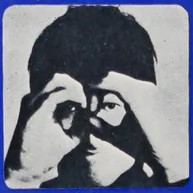 From seeing them interact and react to the circumstances that presented themselves in the movie, die-hard fans of their music got very familiar with their (perceived) personalities, idiosyncrasies and sense of humor. The youth of that time felt like they knew their favorite musicians and, therefore, grew ever more attached. Afterward, the Liverpudlian accent become synonymous with the group as everyone under the sun became amateur impressionists; a practice which continues on to this day.
From seeing them interact and react to the circumstances that presented themselves in the movie, die-hard fans of their music got very familiar with their (perceived) personalities, idiosyncrasies and sense of humor. The youth of that time felt like they knew their favorite musicians and, therefore, grew ever more attached. Afterward, the Liverpudlian accent become synonymous with the group as everyone under the sun became amateur impressionists; a practice which continues on to this day.
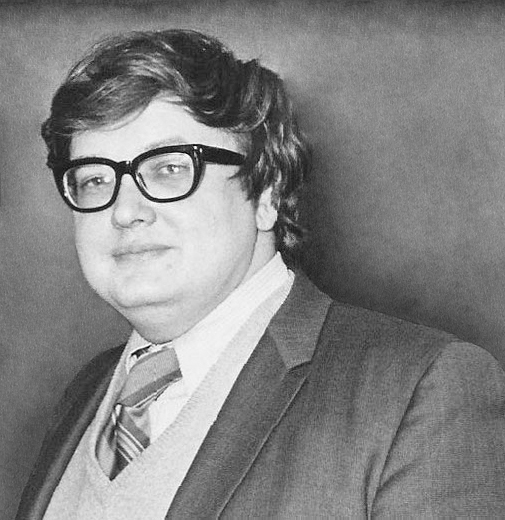 The financial and critical success of this Beatles' film was astounding, as is its legacy. This highly respected "mock documentary" was nominated for two Academy Awards, made the Time Magazine list of all-time great 100 films, and was described in The Village Voice as "the Citizen Cane of jukebox musicals." Popular movie critic Roger Ebert describes "A Hard Day's Night" as "one of the great life-affirming landmarks of the movies." This classic movie has been credited with influencing and/or inspiring the '60s spy movie craze, the popular US TV show "The Monkees," and even MTV.
The financial and critical success of this Beatles' film was astounding, as is its legacy. This highly respected "mock documentary" was nominated for two Academy Awards, made the Time Magazine list of all-time great 100 films, and was described in The Village Voice as "the Citizen Cane of jukebox musicals." Popular movie critic Roger Ebert describes "A Hard Day's Night" as "one of the great life-affirming landmarks of the movies." This classic movie has been credited with influencing and/or inspiring the '60s spy movie craze, the popular US TV show "The Monkees," and even MTV.
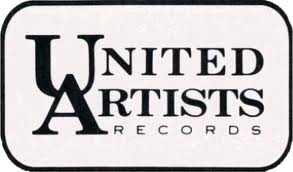
Origin Of The Album
In actuality, this may have been one of the only movies that has ever been produced without the intention of achieving any success. Bud Ornstein, the European head of production for United Artists, helped conceive a plan to "cash in" on the unparalleled success of The Beatles' British fame.
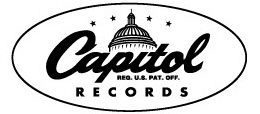 Although The Beatles were virtually unknown in the US as of October of 1963, United Artists knew they would be huge there too. The label was well aware that Capitol Records (the American EMI affiliate who had first shot at releasing Beatles music in the states) kept refusing to release their material in America. They also knew that two small US labels, Vee-Jay Records and Swan Records, were struggling to promote The Beatles records in America but with extremely limited success.
Although The Beatles were virtually unknown in the US as of October of 1963, United Artists knew they would be huge there too. The label was well aware that Capitol Records (the American EMI affiliate who had first shot at releasing Beatles music in the states) kept refusing to release their material in America. They also knew that two small US labels, Vee-Jay Records and Swan Records, were struggling to promote The Beatles records in America but with extremely limited success.
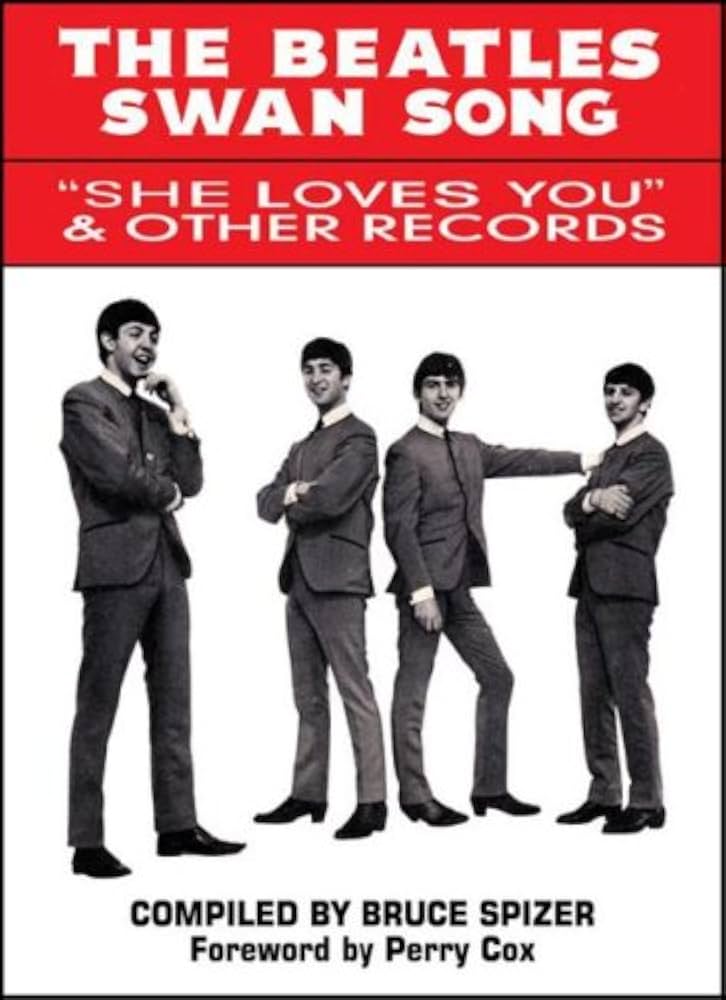 This is where United Artist's plan went into action. As detailed in Bruce Spizer's informative 2007 book "The Beatles Swan Song," Bud Ornstein, European head of production for UA, explained his motivation for the Beatles' film project: "Our record division wants to get the soundtrack album to distribute in the States, and what we lose on the film we'll get back on this disc." Their plan was to produce a low-budget "exploitation" film, which was very commonly done in promotion of recent hits by popular artists, and obtain the rights to release the "soundtrack album" in the US.
This is where United Artist's plan went into action. As detailed in Bruce Spizer's informative 2007 book "The Beatles Swan Song," Bud Ornstein, European head of production for UA, explained his motivation for the Beatles' film project: "Our record division wants to get the soundtrack album to distribute in the States, and what we lose on the film we'll get back on this disc." Their plan was to produce a low-budget "exploitation" film, which was very commonly done in promotion of recent hits by popular artists, and obtain the rights to release the "soundtrack album" in the US.
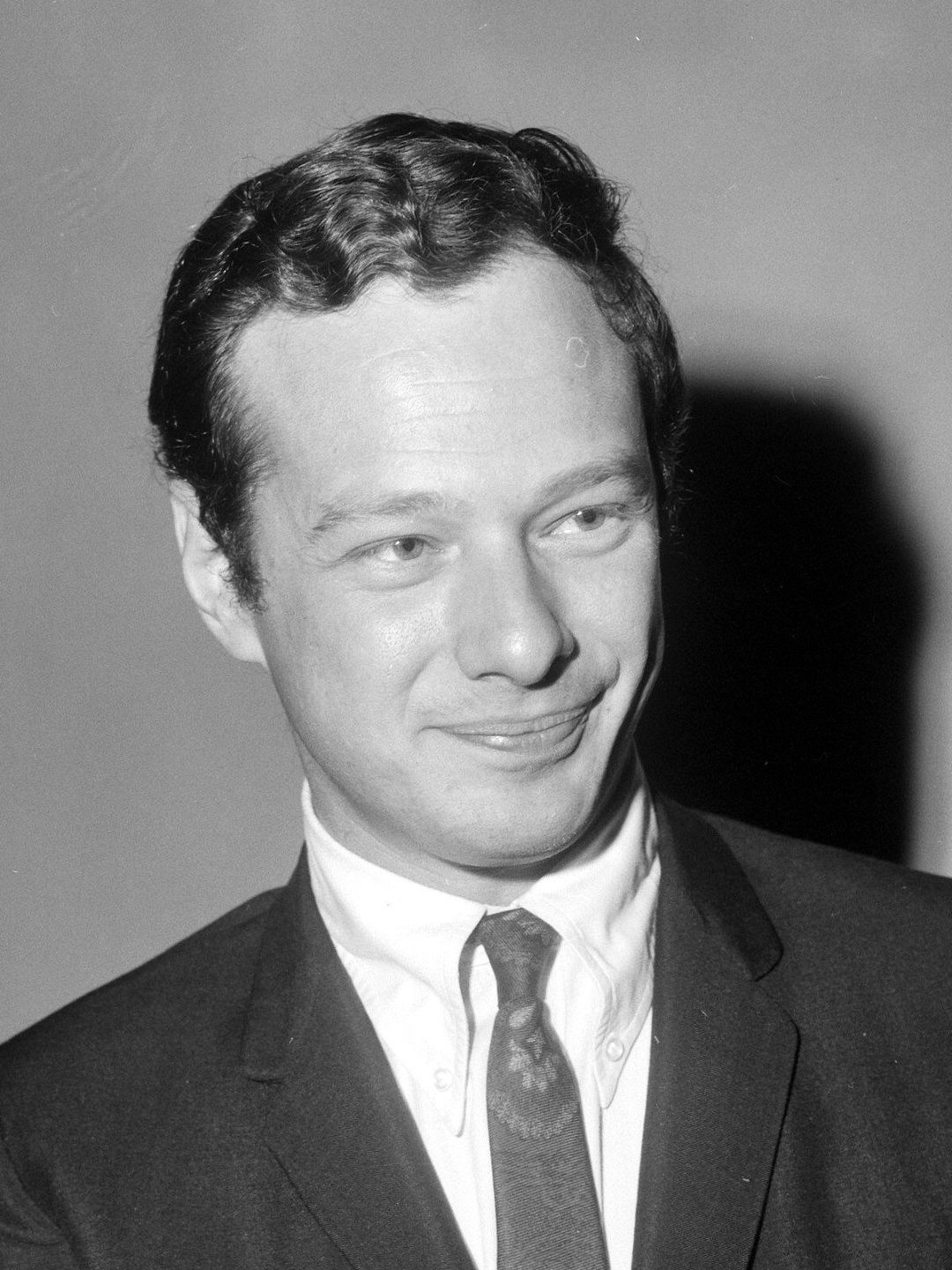 After reaching a tentative agreement with Beatles' manager Brian Epstein, United Artists hired American producer Walter Shenson to work on the film and arranged a meeting in October of 1963 between Bud Ornstein, Walter Shenson and Brian Epstein. After Brian Epstein accepted the soundtrack deal, he was asked what he thought would be a fair percentage for The Beatles to receive from the movie. "I couldn't accept anything less than seven-and-a-half percent" was Brian Epstein's reply. Since Bud Ornstein and Walter Shenson resolved before the meeting that they would offer up to twenty-five percent, they had a deal.
After reaching a tentative agreement with Beatles' manager Brian Epstein, United Artists hired American producer Walter Shenson to work on the film and arranged a meeting in October of 1963 between Bud Ornstein, Walter Shenson and Brian Epstein. After Brian Epstein accepted the soundtrack deal, he was asked what he thought would be a fair percentage for The Beatles to receive from the movie. "I couldn't accept anything less than seven-and-a-half percent" was Brian Epstein's reply. Since Bud Ornstein and Walter Shenson resolved before the meeting that they would offer up to twenty-five percent, they had a deal.
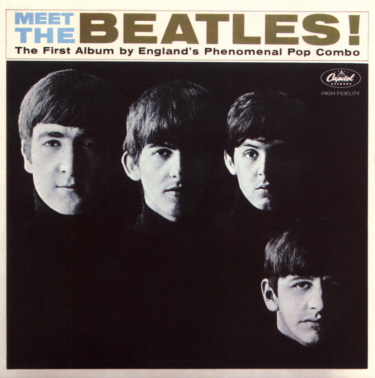 Little by little, the movie deal was used as good leverage for further deals, such as the band appearing on The Ed Sullivan Show, and for promotion of their albums. When Capitol finally exercised their "right of first refusal" to release "Meet The Beatles!" in January of 1964, its liner notes included mention of their upcoming United Artists motion picture.
Little by little, the movie deal was used as good leverage for further deals, such as the band appearing on The Ed Sullivan Show, and for promotion of their albums. When Capitol finally exercised their "right of first refusal" to release "Meet The Beatles!" in January of 1964, its liner notes included mention of their upcoming United Artists motion picture.
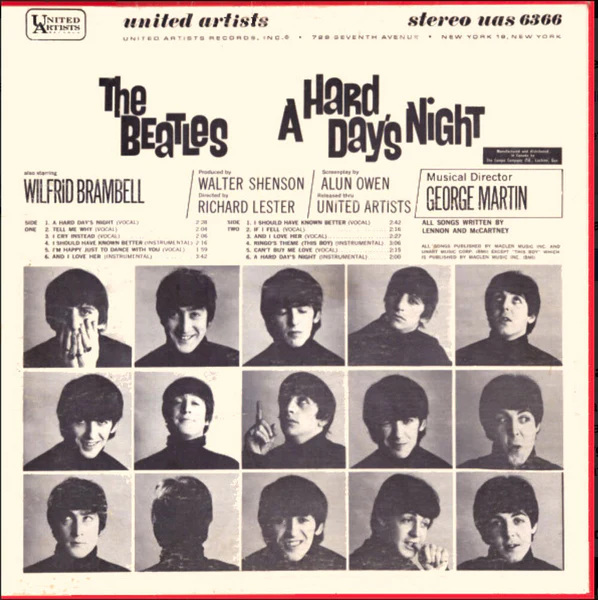
Recording The Album
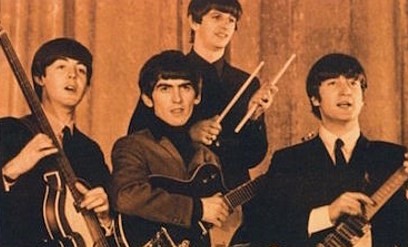 With a mere $500,000 in the budget, and the tentative title "Beatlemania," shooting for the movie was scheduled to begin on March 2, 1964. First order of business, though, was to record the music to be used in the film. This began immediately after their historic first US visit in February of 1964. Between February 25th and March 1st, 1964, eight new songs were completed, which was thought to be sufficient to fill the seven song requirement.
With a mere $500,000 in the budget, and the tentative title "Beatlemania," shooting for the movie was scheduled to begin on March 2, 1964. First order of business, though, was to record the music to be used in the film. This began immediately after their historic first US visit in February of 1964. Between February 25th and March 1st, 1964, eight new songs were completed, which was thought to be sufficient to fill the seven song requirement.
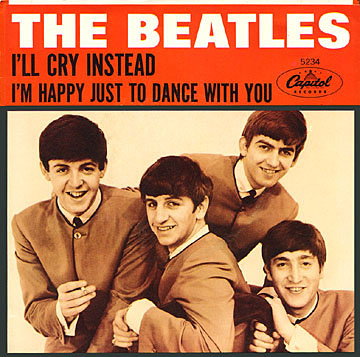 Two more compositions ended up being recorded with the intention of being included in the movie. When the title of the movie was changed to "A Hard Day's Night," a title song was quickly written and subsequently recorded on April 16th, 1964. After the group completed their filming duties on April 24th, 1964, another song was written with the film in mind. "I'll Cry Instead" was recorded on June 1st and quickly dispatched to United Artists for possible inclusion in the film and soundtrack album.
Two more compositions ended up being recorded with the intention of being included in the movie. When the title of the movie was changed to "A Hard Day's Night," a title song was quickly written and subsequently recorded on April 16th, 1964. After the group completed their filming duties on April 24th, 1964, another song was written with the film in mind. "I'll Cry Instead" was recorded on June 1st and quickly dispatched to United Artists for possible inclusion in the film and soundtrack album.
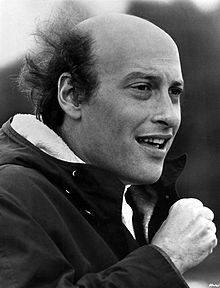 This is not to say that "I'll Cry Instead" was included in the finished movie. Director Richard Lester required a song to be used during the "escape/fire escape" sequence of the film, which was inspired by his famous 1959 "Running, Jumping & Standing Still Film" and was said to be the precursor to music videos of the '80s and beyond. When "I'll Cry Instead" was suggested for this sequence, Richard Lester vetoed it no doubt because of its downbeat lyrics.
This is not to say that "I'll Cry Instead" was included in the finished movie. Director Richard Lester required a song to be used during the "escape/fire escape" sequence of the film, which was inspired by his famous 1959 "Running, Jumping & Standing Still Film" and was said to be the precursor to music videos of the '80s and beyond. When "I'll Cry Instead" was suggested for this sequence, Richard Lester vetoed it no doubt because of its downbeat lyrics.
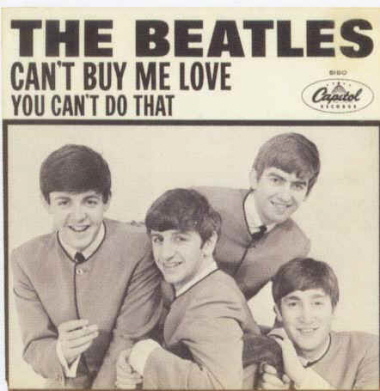 The director's real intention was to capitalize on their current successful hit "Can't Buy Me Love," so this was incorporated as a suitable backdrop to the previously filmed "fire escape" footage instead. "Can't Buy Me Love" was primarily recorded in Paris on January 29th, 1964 and finished off at the February 25th, 1964 recording session at EMI.
The director's real intention was to capitalize on their current successful hit "Can't Buy Me Love," so this was incorporated as a suitable backdrop to the previously filmed "fire escape" footage instead. "Can't Buy Me Love" was primarily recorded in Paris on January 29th, 1964 and finished off at the February 25th, 1964 recording session at EMI.
Since the decision to replace "I'll Cry Instead" with "Can't Buy Me Love" wasn't finalized by the time the American soundtrack album was being put together, both songs appeared on this release. Therefore, the timeframe for recording the US album spans from January 29th to June 1st, 1964.
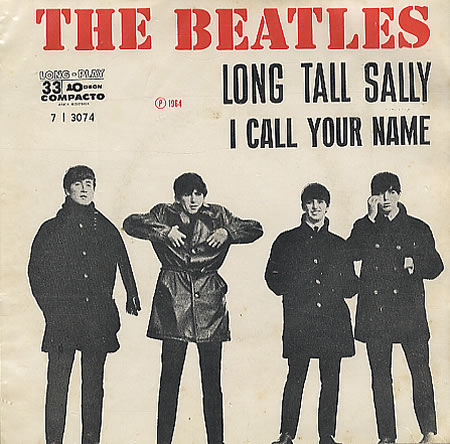
The Make-Up Of The Album
Since four other Beatles songs were included in the actual movie ("She Loves You," "Don't Bother Me," "I Wanna Be Your Man" and "All My Loving"), including them on this soundtrack album would have indeed made a suitable and conventional twelve-song release. And since "I Call Your Name" was submitted to United Artists as well, this could have made for a well rounded soundtrack album indeed.
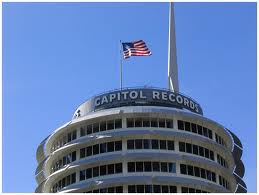 But this was not to be. Since Capitol did decide to release The Beatles records in the US, and all five of these songs were already released in America by this time, United Artists were kept to the seven main songs featured in the film as well as the tentative "I'll Cry Instead." Since "Can't Buy Me Love," which was also already released by Capitol in the states, was prominently featured in the film, an exception was made and permission was given for the song's inclusion on the soundtrack album.
But this was not to be. Since Capitol did decide to release The Beatles records in the US, and all five of these songs were already released in America by this time, United Artists were kept to the seven main songs featured in the film as well as the tentative "I'll Cry Instead." Since "Can't Buy Me Love," which was also already released by Capitol in the states, was prominently featured in the film, an exception was made and permission was given for the song's inclusion on the soundtrack album.
 Standard practice for movie soundtrack albums in the '60s was to include instrumental or orchestrated recordings, so this idea was utilized to pan out the eight available Beatles tracks with George Martin produced versions of Beatles songs. The four instrumental songs chosen from the film were renditions of "I Should Have Known Better," "And I Love Her," "Ringo's Theme (This Boy)" and "A Hard Day's Night," all performed by "George Martin And His Orchestra."
Standard practice for movie soundtrack albums in the '60s was to include instrumental or orchestrated recordings, so this idea was utilized to pan out the eight available Beatles tracks with George Martin produced versions of Beatles songs. The four instrumental songs chosen from the film were renditions of "I Should Have Known Better," "And I Love Her," "Ringo's Theme (This Boy)" and "A Hard Day's Night," all performed by "George Martin And His Orchestra."
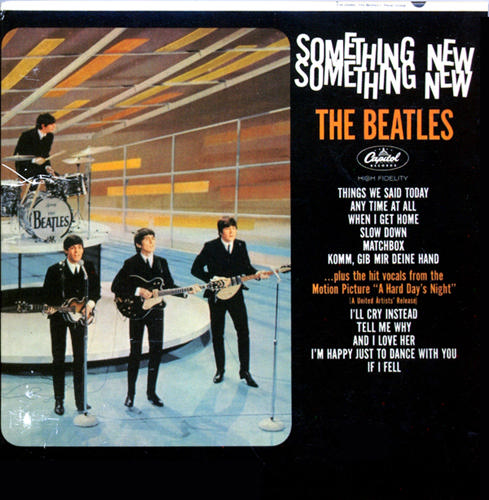 Since United Artists Records was only allowed to release The Beatles' material on this soundtrack album, Capitol Records was free to use the same recordings in any form they pleased as long as it wasn't touted as a "soundtrack album." Capitol's planned release of the single "A Hard Day's Night" as well as an August 1st, 1964 release of an album called "Something New" featuring all seven movie songs inspired United Artists to rush-release their album even before the film's American debut on August 11th, 1964. Therefore, UA released the official soundtrack album of "A Hard Day's Night" on June 26th, 1964.
Since United Artists Records was only allowed to release The Beatles' material on this soundtrack album, Capitol Records was free to use the same recordings in any form they pleased as long as it wasn't touted as a "soundtrack album." Capitol's planned release of the single "A Hard Day's Night" as well as an August 1st, 1964 release of an album called "Something New" featuring all seven movie songs inspired United Artists to rush-release their album even before the film's American debut on August 11th, 1964. Therefore, UA released the official soundtrack album of "A Hard Day's Night" on June 26th, 1964.
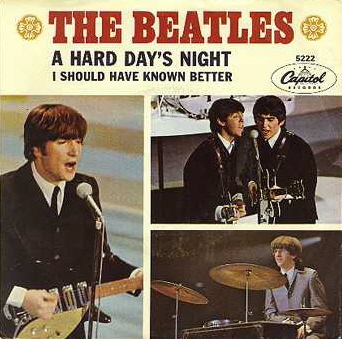 This highly anticipated soundtrack, which even beat Capitol's July 13th, 1964 release date for the "A Hard Day's Night" single, rushed to the #1 spot on the Billboard album chart, where it remained for an amazing fourteen weeks, the longest run at #1 that year. The early success of this album made Capitol rethink its strategy, which led to them reformatting their "Something New" album to feature only five of the songs on the UA album and include more new Beatles material that had just been made available. Capitol's July 20th, 1964 released album was kept out of the #1 spot by United Artists' soundtrack album, although it did sell very well and peaked at #2 for nine weeks straight.
This highly anticipated soundtrack, which even beat Capitol's July 13th, 1964 release date for the "A Hard Day's Night" single, rushed to the #1 spot on the Billboard album chart, where it remained for an amazing fourteen weeks, the longest run at #1 that year. The early success of this album made Capitol rethink its strategy, which led to them reformatting their "Something New" album to feature only five of the songs on the UA album and include more new Beatles material that had just been made available. Capitol's July 20th, 1964 released album was kept out of the #1 spot by United Artists' soundtrack album, although it did sell very well and peaked at #2 for nine weeks straight.
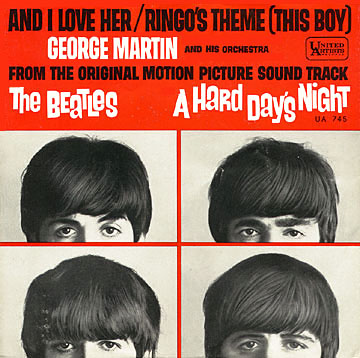 United Artists did whatever else it could to generate as much sales from this Beatles' project as possible. Even though they were restricted from releasing The Beatles material as singles, they could release the George Martin instrumentals any way they pleased. Two singles were released, the first being "And I Love Her" with "Ringo's Theme (This Boy)" as the b-side. While "And I Love Her" only reached #105 on the Billboard singles chart, "Ringo's Theme (This Boy)," probably because of its being heard as a backdrop to the popular "lonely Ringo" segment in the movie, nearly made the top 40, peaking at #53 on the Billboard Hot 100. The deceptive use of Beatles images on the picture sleeve of the single may also have generated sales.
United Artists did whatever else it could to generate as much sales from this Beatles' project as possible. Even though they were restricted from releasing The Beatles material as singles, they could release the George Martin instrumentals any way they pleased. Two singles were released, the first being "And I Love Her" with "Ringo's Theme (This Boy)" as the b-side. While "And I Love Her" only reached #105 on the Billboard singles chart, "Ringo's Theme (This Boy)," probably because of its being heard as a backdrop to the popular "lonely Ringo" segment in the movie, nearly made the top 40, peaking at #53 on the Billboard Hot 100. The deceptive use of Beatles images on the picture sleeve of the single may also have generated sales.
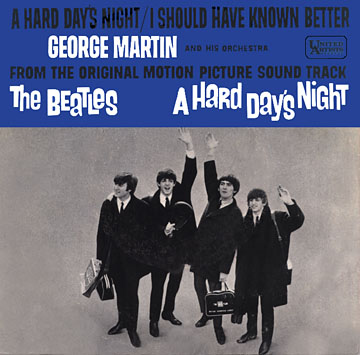 The second George Martin Orchestra single that was released contained the other two instrumental songs from the soundtrack album: "A Hard Day's Night" and "I Should Have Known Better." UA may have had the intention of confusing record buyers that this single contained The Beatles' original renditions of these recordings, not only because the picture sleeve featured a photo of The Beatles, but because this single contained the same exact songs as on the #1 Capitol single. However, this UA single generated substationally less sales, "I Should Have Known Better" peaking at #111 and "A Hard Day's Night" peaking at #122.
The second George Martin Orchestra single that was released contained the other two instrumental songs from the soundtrack album: "A Hard Day's Night" and "I Should Have Known Better." UA may have had the intention of confusing record buyers that this single contained The Beatles' original renditions of these recordings, not only because the picture sleeve featured a photo of The Beatles, but because this single contained the same exact songs as on the #1 Capitol single. However, this UA single generated substationally less sales, "I Should Have Known Better" peaking at #111 and "A Hard Day's Night" peaking at #122.
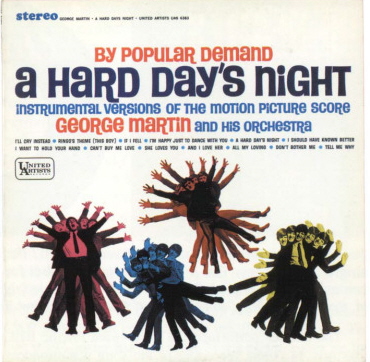 Also released was a full album of George Martin instrumentals entitled "By Popular Demand, A Hard Day's Night, Instrumental Versions Of The Motion Picture Score." This album, which contained the producer's four instrumentals on the UA soundtrack album as well as nine others, generated very little success, which disputes the "popular demand" claim of the title.
Also released was a full album of George Martin instrumentals entitled "By Popular Demand, A Hard Day's Night, Instrumental Versions Of The Motion Picture Score." This album, which contained the producer's four instrumentals on the UA soundtrack album as well as nine others, generated very little success, which disputes the "popular demand" claim of the title.
The official Beatles' UA "A Hard Day's Night" Soundtrack Album remained in print in America throughout the '60s and '70s, and when United Artists was acquired by EMI, Capitol re-released the album on August 1st, 1980 and kept it in print until the compact disc era deemed this album redundant.
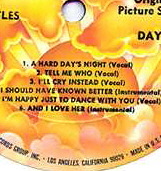 Another interesting note regarding the UA sountrack album is their incessant record label mistakes. The track "I'll Cry Instead" was mistakenly printed as "I Cry Instead" on both the sleeve and the label of most pressings, depending on which of the five pressing facilities hired by United Artists manufactured the LP. This mistake was eventually corrected on pressings in the late '70s. However, many of the later pressings that had the corrected "I'll Cry Instead" song title on the back cover identified the song "Tell Me Why" as "Tell Me Who" on the label. Either way, with the album being reported in Billboard magazine as one of the fastest selling albums in the history of the record business, getting the label right didn't really matter.
Another interesting note regarding the UA sountrack album is their incessant record label mistakes. The track "I'll Cry Instead" was mistakenly printed as "I Cry Instead" on both the sleeve and the label of most pressings, depending on which of the five pressing facilities hired by United Artists manufactured the LP. This mistake was eventually corrected on pressings in the late '70s. However, many of the later pressings that had the corrected "I'll Cry Instead" song title on the back cover identified the song "Tell Me Why" as "Tell Me Who" on the label. Either way, with the album being reported in Billboard magazine as one of the fastest selling albums in the history of the record business, getting the label right didn't really matter.
Written and compiled by Dave Rybaczewski